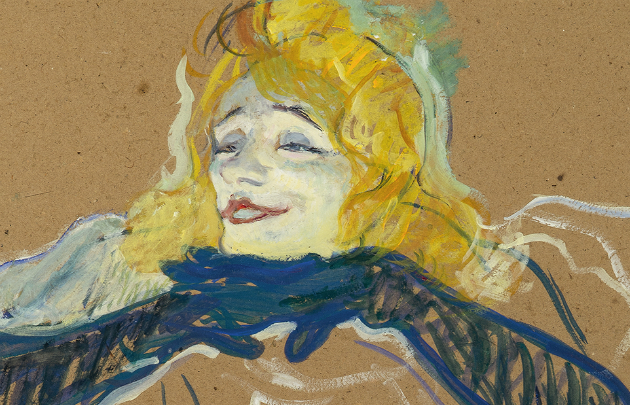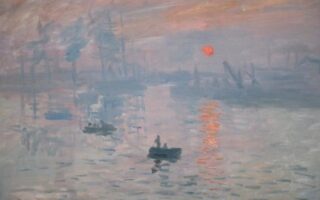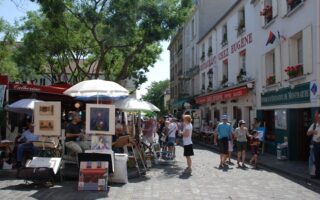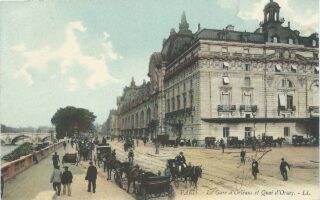From El Greco to Toulouse-Lautrec: Must-See Exhibitions in Paris
- SUBSCRIBE
- ALREADY SUBSCRIBED?
BECOME A BONJOUR PARIS MEMBER
Gain full access to our collection of over 5,000 articles and bring the City of Light into your life. Just 60 USD per year.
Find out why you should become a member here.
Sign in
Fill in your credentials below.
The leaves change in Paris, the streets get a little easier to navigate and the museums open new exhibitions. This is autumn in Paris, one of the best seasons to be in the City of Light, but then again, is there ever a bad time? For the art lover this is the perfect time to take in the walls of the museums filled with works by marquee artists.
The current exhibitions are dedicated to the life’s work of artists that are rarely seen in such a grand scale in Paris. Toulouse-Lautrec, El Greco, and of course Leonardo da Vinci are a few that should be at the top of anyone’s list along with a few others.
The life of Toulouse-Lautrec is one of tragedy, alcoholism and early death. Focusing on a population of Paris that many scoffed, he was able to bring them to life with his use of color. Henri de Toulouse-Lautrec was born to an aristocratic family; in fact, his parents were cousins and this would lead to many of his health problems. As a teenager, he fractured his right leg and this problem, coupled with his genetic makeup, caused him to never fully grow. His legs would stay child size and his torso of a man. At 4”8’ and shut up inside most of the time as a young boy, he began to sketch which was noticed quickly by his mother.
Moving to Paris, he discovered Montmartre where he would remain for over two decades. Meeting fellow struggling artists like Vincent van Gogh and Suzanne Valadon, Henri would find a support and a community he hadn’t found before. Shunned by women he would turn to the prostitutes of Pigalle where one encounter inspired him to take to his easel. His vast collection of works includes many of his paintings that look behind the curtain at the life of these women. He gave them a voice in his paintings depicting them in everyday tasks such as undressing and bathing.
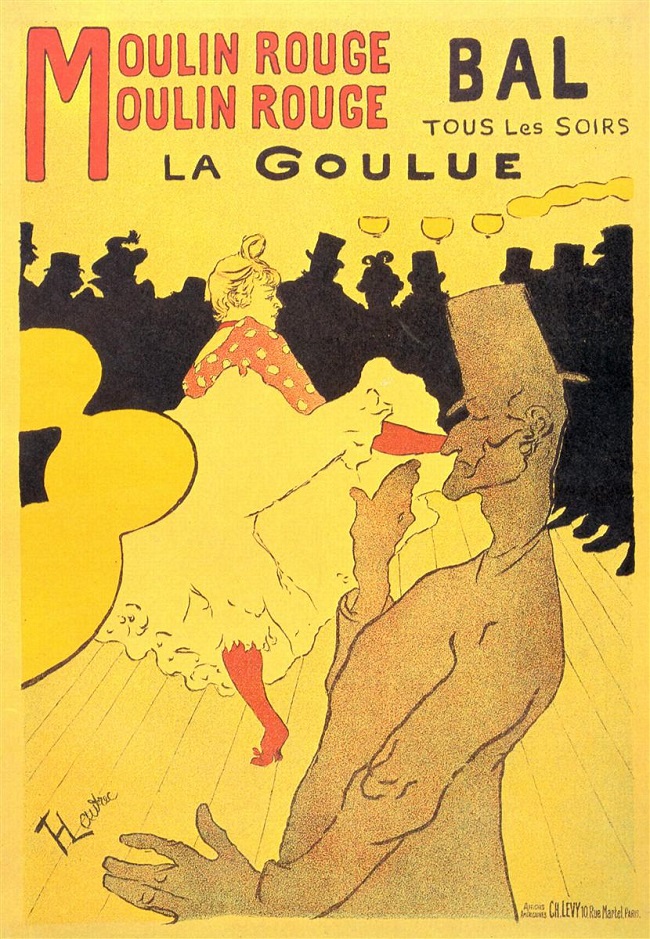
Moulin Rouge La Goulue,
Henri de Toulouse-Lautrec. Image © Wikiart, public domain
However, it was his foray into the Moulin Rouge that changed his course. Asked to create a poster for the new dance hall, he would sit in his reserved seat every night, paint the dancers and singers, and bring them to life in the posters for the venue. Jane Avril, Yvette Guilbert and Louis Weber would be depicted many times in images we know so well today. Looked down on by the artistic elite of Paris, he was once again left as an outsider. Today we know the Moulin Rouge through his eyes and those images will last generations. Dying at the young age of 36 due to his bouts with alcoholism and syphilis, Toulouse-Lautrec would go onto inspire the giants of the 20th century including Picasso.
The exhibition at the Grand Palais focuses on the life of the young painter starting with a self-portrait of him as a young man and following until the end of his life. Toulouse-Lautrec was more than just a poster artist he was an artist of the everyday hidden people of Montmartre and for that, we are eternally grateful. The exhibition at the Grand Palais runs until 27 January; buy your tickets in advance and also download the app and audio guide before you arrive to enhance the exhibition.
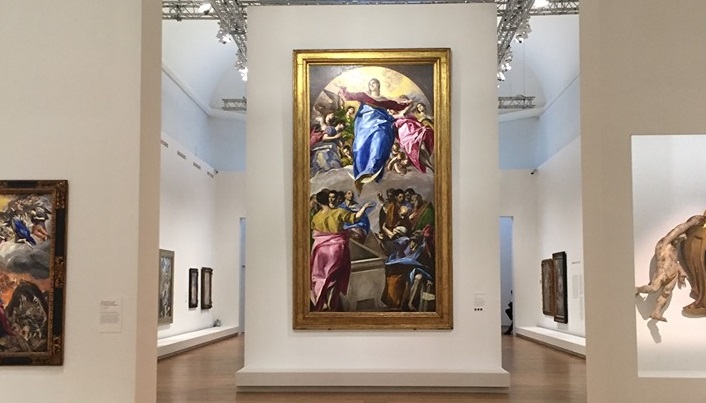
The Greco exhibition at Musée du Louvre. Image © Facebook, Grand Palais
Also on view at the Grand Palais is the retrospective of legendary painter El Greco. Born in 1541, Doménikos Theotokópoulos would be given the nickname El Greco for his Greek heritage later in life but would still sign all his paintings with his birth name. Moving to Venice and Rome where Titian and Michelangelo reigned, he would work in dark rooms where he felt the ambiance helped guide his thoughts more than the light. This is how he would refine his painting style. It would be his final move to Spain that would shape the artist we know as El Greco. Focusing on religious iconography and hoping for large scale commissions, the unknown artist was rarely seen. When people did see his paintings, they thought he was crazy for his unusual style, so far removed from that of the masters. Today of course, we see him as a genius, a man well ahead of his time and one of the greats of the Renaissance.
Seventy-five paintings have been amassed for the exhibition including three from the Musée du Louvre including Saint Louis, depicting the saint and former king as never before. Look closely at the Vision of Saint John; as soon as I saw it I thought it looked like it could be a Picasso. In fact, the El Greco painting is said to have inspired Picasso and Les Demoiselle d’Avignon. El Greco’s use of pastel and bright colors was striking at the time; today when you see this collection you would think they were from the 19th or 20th century, not from the 16th. The exhibition runs until 10 February, and also has an app to download before you arrive. I am a big believer in any of the audio guides to enhance your visit.
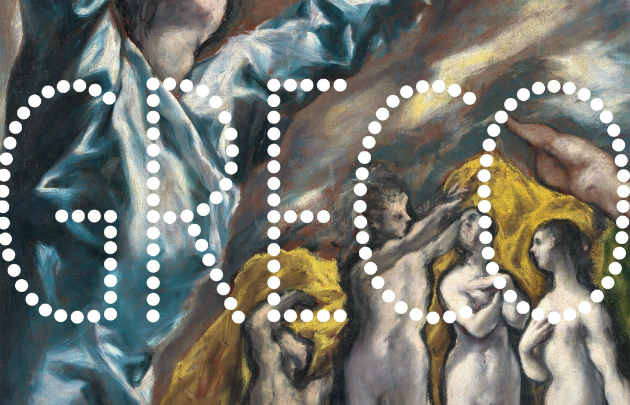
Le Greco. Image © Paris Official website of the Convention and Visitors Bureau
You would have to be living under a Madonna of the Rocks for the last year to not know about the Leonardo da Vinci exhibition at the Musée du Louvre. For ten years, Louvre curators Vincent Delieuvin, Department of Paintings, and Louis Frank, Department of Prints and Drawings, have been working to secure as many of the Renaissance master’s works for their landmark exhibition. Marking the 500th anniversary of Leonardo da Vinci’s death in Ambroise, the year of celebrations in the Loire Valley culminates in the Louvre. In 1516, while King François I was in Rome, he met da Vinci and invited him to return with him to France. Leonardo packed up his work, including the Mona Lisa, and headed to the Valley of the Kings to live out his final days. Before his death, he would give and sell the art-loving king four of his masterpieces that would begin the royal collection– now the basis of the Musée du Louvre. Today the Louvre owns five of his paintings, more than any other museum in the world.
A cause of disagreement for Italy as far back as da Vinci’s death, political issues came into play while pulling the exhibition together yet again. Just a week before the opening, Leonardo’s Vitruvian Man hung in the balance until the last minute with Italy trying to block its loan to the Louvre. Unable to travel to France, The Adoration in the Uffizi Gallery in Florence is recreated with infrared reflectography along with the Last Supper. While it may not be as good as seeing the one by the artist’s hand, they help to tell the story of his artistic life.
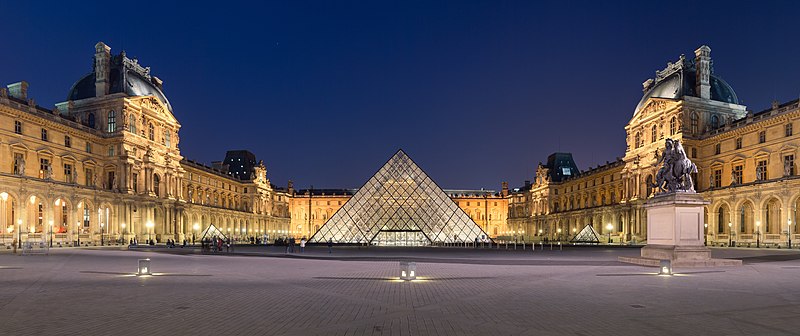
Napoleon courtyard of the Louvre museum at night time, with Ieoh Ming Pei’s pyramid in the middle. Image © Wikipedia. CC BY-SA 3.0
However, there is plenty to see with over 160 paintings, drawings, manuscripts and statues. With the inquisitive mind of a scientist, da Vinci would create hundreds of drawings and models overtime, many included in the exhibit. A legacy that left behind only 15 paintings that can be attributed to him is not a view on his laziness or lack of focus painting. It is exactly the opposite. Da Vinci believed with his scientific mind that a painting would grow over time, during its execution. In 1503 he began to paint La Joconde and was working on it until his death in 1519 along with Saint John the Baptist and The Virgin and Child with Saint Anne which took a mere 20 years to finish. The exhibition does an amazing job of comparing studies side by side with their final work. I love anytime you can see inside the artist’s mind and the steps they take to get to the final piece. The lady of the Louvre, La Joconde, will remain in her newly renovated Salle des États in the Denon wing as her presence would make the exhibition unbearable. The special exhibition is on view until 24 February and timed reservations are required and selling quickly.
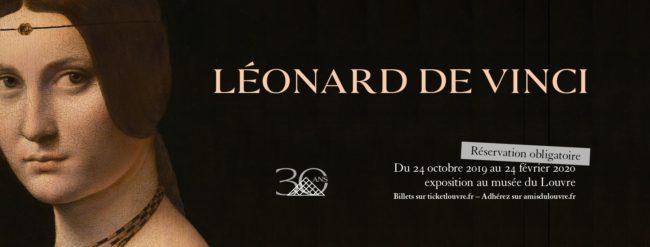
Image credit: Facebook, Musée du Louvre
Da Vinci isn’t the only thing happening in the Musée du Louvre. In the Petite Galerie, a fantastic exhibition, The Advent of the Artist, gives a glimpse into the life of the artist.
Before the Renaissance many artists were anonymous, canvases were left unsigned and a self portrait was unheard of. Examples of ancient Greek pottery all the way up to 18th statues show the slow progression of the artist trying to assert their name. In the next section, the self-portrait takes center stage. As I turned the corner, my favorite Eugène Delacroix in his green vest looked back at me. Surrounded by portraits of Vigée Le Brun and Rembrandt, the goal of the painting style comes to life. I said bonjour to my old friend Eugène and with that, the self portrait completed its mission. Would we know who some of these great artists were if it wasn’t for them painting themselves?
Other artists and writers match each painting with a plaque with reviews, essays and thoughts. Wonderfully done and gives even more of a story to these great painters and paintings. The final section covers the Royal Academy and the Salon– so instrumental in the success of an artist. Grand paintings depicting the Salon brings to life how the walls of the Louvre were once covered. The small exhibition is amazing and will give you newfound knowledge of the life of an artist. Running until June 29 and included in your Louvre ticket. A space that is rarely visited; shouldn’t be missed.
The Musée Picasso Paris is always a sure bet to have an amazing exhibition. This season, Picasso Tableaux Magiques focuses on a four-year period of the artist’s life much less known then his blue or rose period. From the summer of 1926 to spring of 1930, in Juan-les-Pins in the south of France, Picasso focused mostly on figures and faces that would develop with each painting. In 1938 art critic Christian Zervos would name the collection (150 paintings) as “Picasso’s magic paintings”. Zervos saw Picasso as a magician able to create new genres in art with only a few strokes, thus the name. The transformation of facial features is a key point along with symbols and hidden meanings. While his affair with Marie-Thérèse Walter had begun in 1927, he would include her initials in some of the paintings that are hard to see unless you know to look for them. One section of the exhibit lends a page to the story of the Apollinaire memorial.
A monument to his former friend, he submitted his Métamorphose I & II statues to the committee, on display in the exhibit. Frustrated Picasso dug in his heels and in the end gave a sculpture of his muse Dora Maar to be used instead. The final of his Magic Paintings would be done in Paris in early 1930, painted on wood panels thought to be from a wardrobe he destroyed. The Musée Picasso is one of the best museums in Paris, even if you aren’t a Picasso fan, you should pay it a visit. You will come out with a much better appreciation of the man behind the brush. The permanent collection changes frequently and is masterly organized all in a historic Marais mansion. On display until February 23; a visit makes for a perfect day spent in the Marais.
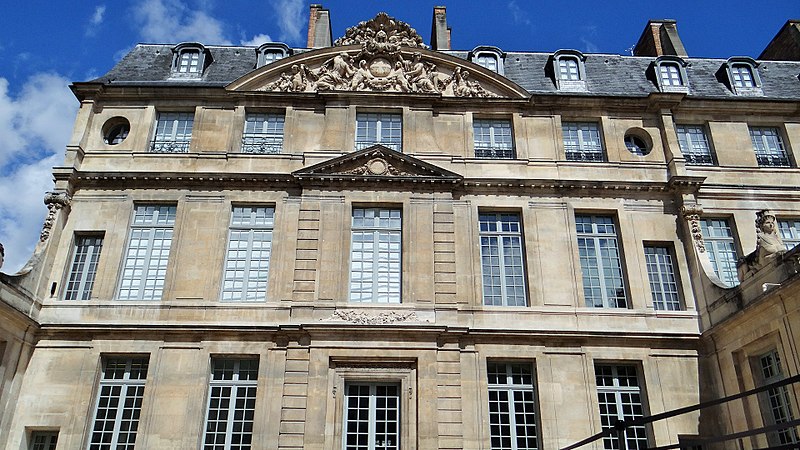
Musée national picasso paris. Image © Wikipedia, CC BY-SA 4.0
If you love Italian Renaissance art, exquisite gold frames and getting a glimpse into an often hidden private collection, then this is the exhibition for you. In one of the most beautiful museums in Paris, the Musée Jacquemart-André, the show Masterpieces of Italian Paintings runs until 20 January. The 75 pieces on display are from the private collection of Àlvaro Saieh and Ana Guzmán, normally filling the walls of their New Jersey home. For this short time and under exceptional loan they grace the walls of this historic museum. It is rather fitting that the couple would lend their very personal and much loved collection to the Musée Jacquemart-André. Long before it was a museum, it was the home of Nélie Jacquemart and Édouard André. From a long line of bankers, the wealthy Édouard was also an avid art collector, with his wife Nélie, also a well-regarded artist, they amassed quite a collection and had the mansion built to showcase their French and Flemish paintings along with their own Italian Renaissance pieces.
The home and its collection would be donated to the Institut de France and opened as a museum in 1913. Over a hundred years later the Saieh and Guzman Alana Collection fits in seamlessly. Lining the walls are 14th and 15th century paintings in the most stunning gold gilded frames– one even more striking then the other. You can also admire Filippo di Jacopo’s Mother and Child from the 13th century, with its Byzantine influence. Arrive early and have lunch in the lovely café with its amazing painted celling.
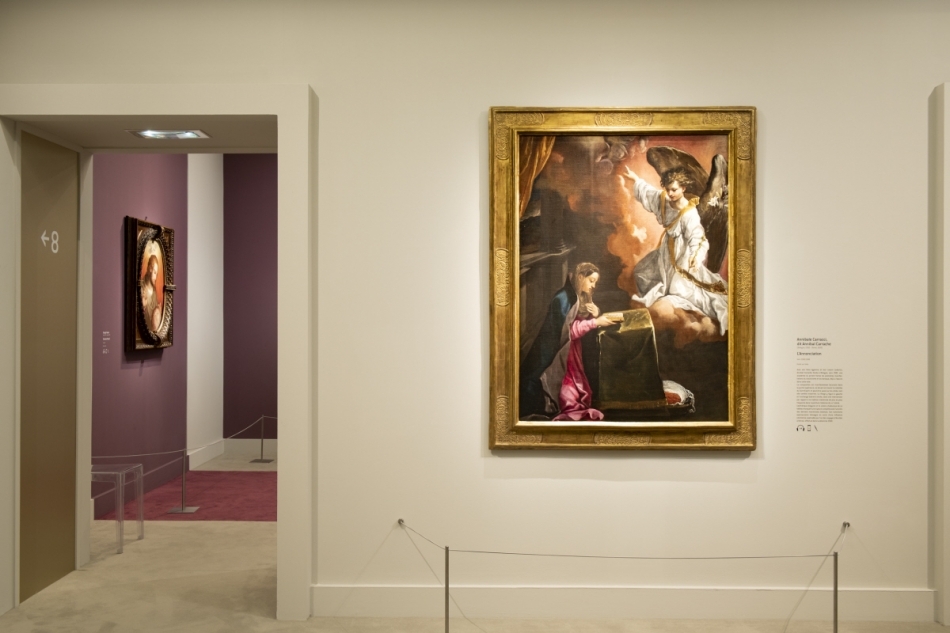
The Alana Collection. Image © JACQUEMART-ANDRÉ MUSEUM
Another gem of a museum that is rarely on the tourist track is the Musée Maillol Paris. Opened in 1995 and containing the collection of Aristide Maillol as well as that of his model and collaborator Dina Vierny, it is a small but wonderfully curated museum. The current exhibition From the Douanier Rousseay to Séraphine- the Great Naïve Masters gives guests a glimpse into the “modern primitives,” many of which were already in the permanent collection of Dina Vierny. Henri Rousseau was a toll and tax collector by day and at night would paint scenes he saw every day. Rousseau in a way was discovered by Picasso or at least people began to appreciate the Naïve painter after Picasso threw him a party at the Bateau Lavoir in 1908. With no formal training, Rousseau and his fellow artists on display in this exhibition created their own style of painting, bucking the opinions of society and art critics. For the first time in Paris, over 100 pieces come together with each of the artists sharing a slice of their life.
Louis Vivan, a postal clerk on the eastern French railways, would collect postcards of Paris and in his spare time, he would recreate the images. His large Paris Basilique du Sacré-Coeur de Montmartre is fantastic. Another postal worker, René Rimbert, painted one of my favorite scenes in Paris, Henri IV, le Pont-Neuf et l’Île de la Cité. Rather than showing the bronzed Henri IV on his horse, he looks back at us through a small painting hanging in a bouquiniste. The exhibit will bring a smile to your face with its bright and cheerful colors. Make sure to purchase the audio guide or app to really get a feel for the people behind these beautiful works. Following the exhibition, do not miss the permanent collection of Maillol statues on the upper floor, and on your next visit to the Jardin des Tuileries you will run into a few recognizable friends among the shrubs.
Other collections not to miss include Back Side: Fashion from Behind at the Musée Bourdelle, in conjunction with the Palais Garnier, exploring an often-overlooked part of fashion. Seamlessly intermixed with the statues of Bourdelle, it is a treat for the senses. In addition, there’s Degas at the Opera showing at the Orsay, and Marie Antoinette: Metamorphoses of an Image at the Conciergerie. The latter brings together the many images, movies, and fashion of the final queen of France just steps away from where she spent the last few months of her life. Make sure you venture down to see the chapel built in what was her final cell before she left for the guillotine.
There is an endless supply of wonderful things to see in Paris. In the comments section below, please let us know if you saw one of these amazing exhibits and what you thought!
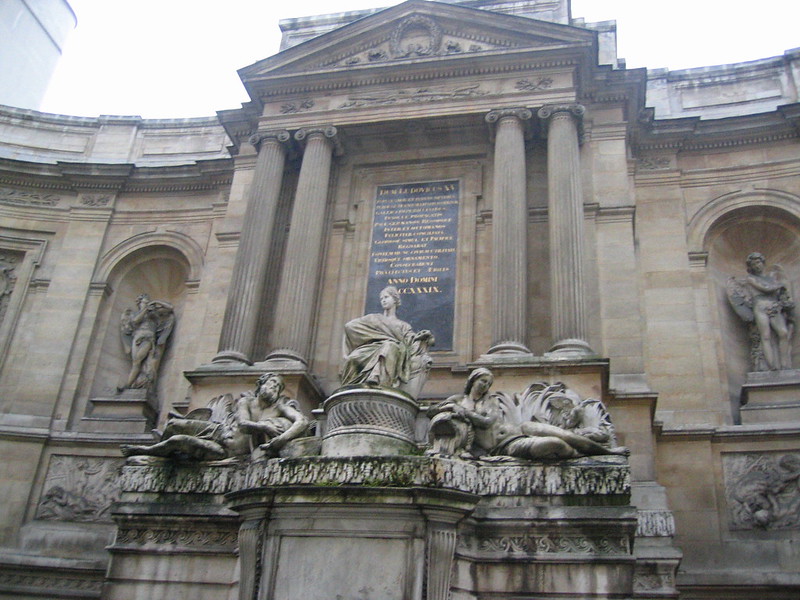
Paris: Musée Maillol. Taken on December 6, 2007. Image © Flickr
Lead photo credit : Toulouse-Lautrec: Resolutely Modern. Image © Paris Official website of the Convention and Visitors Bureau
More in Degas, Louvre, marie antoinette, Orsay, picasso
